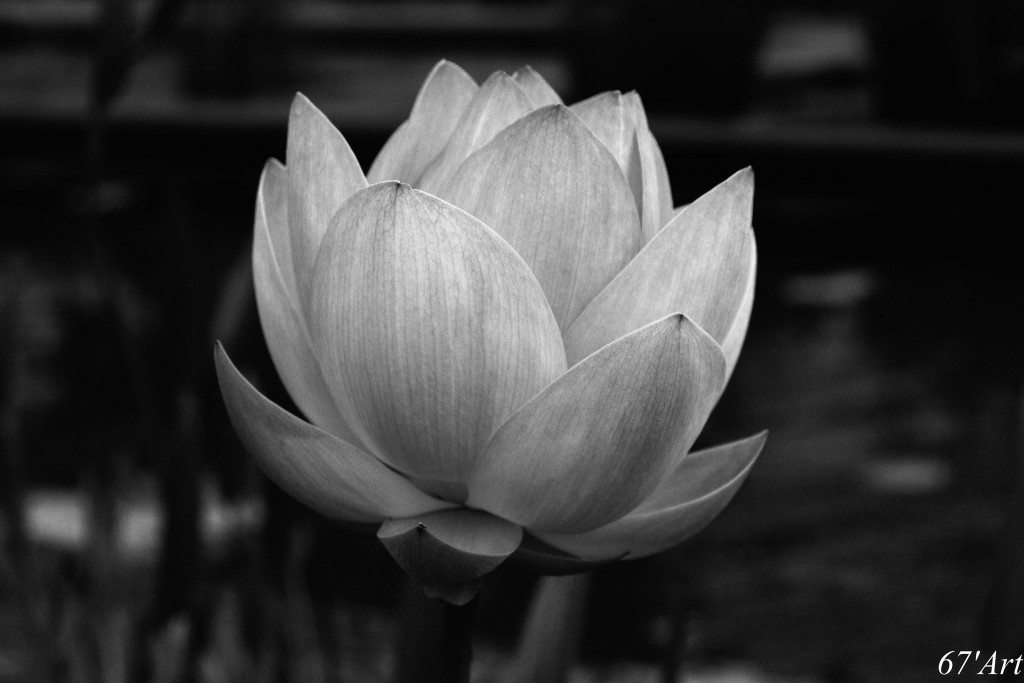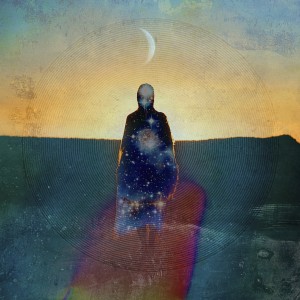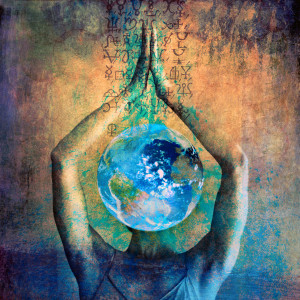“She’s mad, but she’s magic. There’s no lie in her fire.” ~Charles Bukowski
In the modern day, when we hear “tantra” or “tantric,” we think of some New Age blend of mysticism and pornography. The Internet and the marketplace are rife with “tantric courses” that promise us sexual freedom like we’ve never known before, that promise us mastery over our partner’s pleasure and orgasms that last for hours. This current appropriation and expression of the timeless art of tantra is not unlike the conflation of yoga with fitness and exercise—telling, but not the whole story.
On one hand, these manifestations respond to needs and wants in our collective consciousness, and on the other hand, they can pose as obstacles to authenticity, real growth, and joyful engagement by perpetuating narratives of dominance and exploitation. They can help as much as they can harm, depending on the way we exercise our discernment and make contact with the embodied, incarnate immediacy of our experience.
The romantic and the “sexy” are undeniably and irresistibly a part of tantra, as significant as the sun and the moon are within a cyclical, evolving landscape—as essential as our continual becoming is to our well-being, as inseparable as heat from fire. Even as there are many tantras and not simply one, the bond between energy (of all sorts) and consciousness is a consistent theme.
One of the primary tenets of tantric practice, in fact, is the development of subtle awareness and the balancing of inner and outer lives. From this perspective, sexuality, with all its heavens and hells, is seen as possessing great untapped potential.
 Here, sexuality is not just “sex” but our sense of aliveness, rhythm, vulnerability, openness, and bliss, which functions as the ground of so much. It encompasses social justice as well as individuation. It thrives on imagination as much as it does upon stimulation, on anticipation as much as on consummation. It is erotic, sweet, generous …
Here, sexuality is not just “sex” but our sense of aliveness, rhythm, vulnerability, openness, and bliss, which functions as the ground of so much. It encompasses social justice as well as individuation. It thrives on imagination as much as it does upon stimulation, on anticipation as much as on consummation. It is erotic, sweet, generous …
As these subjects are hungry for our attention and crave touch, I hope I can contribute to a frank, yet tender, and uncensored, yet reverent, discussion around sensuality, orgasm, and connection. However, I may do so indirectly rather than directly, by sharing the psychological insights, deep philosophical truths, and personal revelations that have made tantra a living path and transmission for me—by sharing my relationship with the divine feminine, goddess, and great mother.
Tantra found me in an understated, even somewhat sneaky, way. I had been a dedicated yoga practitioner for two years with a daily practice of asana, pranayama, meditation, and self-inquiry. It was an odd and intense period for me, one of much solitude, diligent curiosity, and seeking. I didn’t realize or acknowledge that a new path had opened up until I found myself firmly grounded in it. I also at first didn’t dare to connect the different experiences I was having as evidence of any kind of lineage or unfolding. There were dreams that weren’t “dreams”; there were books and encounters and teachers that were more like synchronicities than isolated incidents; and there was the slow but surefire awakening of my body, but to be honest, I can’t remember any single moment in which I thought, “Oh, so this is tantra.” By the time I recognized it as a whole, it had already become a part of me, and I of it. So that, rather than having acquired a new language or name, I felt like my soul was speaking to me from a place that was ancient and childlike, old and new, long awaited and, yet, ever present.
Put another way, my understanding of tantra is a luscious play of opposites. By “luscious,” I don’t mean to echo the endless advertisements that try to seduce us with cookies and shampoos and potato peelers on a daily basis. By luscious, I mean the real, alive, fierce abundance that makes us no promise of comfort or pleasure. Instead, it offers us dignity, humor, grace, perseverance, and passionate love.
Or, as tantriks would say—not “it” but “She.”
In tantra, the feminine is not only exalted, it is used to symbolize the awakening of the soul and the paradox of mystery and revelation. So why doesn’t it just say that, instead of calling it a woman? Because tantra is not an exposition, it is a poetic, multilayered, and multivocal weave.*
By transmitting so many of its teachings through the metaphor and deep knowing of a woman and her body, tantra strives to end an estrangement between our innermost self and its most vital source of nourishment while appealing to the spirit of celebration, inquiry, and the numinous unknown.
The challenge and the invitation here, as in any intimate relationship, whether between parent and child or between two lovers, is to more fully meet the “Other.”
If the “Other” feels too nebulous or unfathomable, consider the “Other” as the dynamic action of the Self.
We cannot ask the question of “who is the Self?” without feeling for “how is the Self in relation?”
One of the most common misconceptions in neo-tantric circles is to render the “divine feminine” or the “divine masculine” as literal idols. I believe this is an ultimately therapeutic usage that supports a process of affirmation and empowerment; however, it has its limits.
When we set out to recognize and reclaim the divine spark in our gendered bodies, we can experience a tremendous sense of freedom. Someone who has always eschewed high heels as shallow and oppressive may enjoy a night out with a pair of bright red stilettos, or someone who has never felt comfortable leaving the house without makeup might embark on a moonlight walk, barefoot and fearless. A man may discover new pleasure in approaching conflict with receptivity … another may give himself permission to wear eyeliner … while yet another will find a potency unhindered by fears of inadequacy.
Tantra is neither about escaping reality nor wallowing in materialism; it is essentially engaged in transformation—sometimes through inversion, sometimes through visualization, sometimes through overwhelming emotion, and sometimes through uncompromising observation.
It is natural for relationships to be a process by which we heal ruptures within our psyche, explore our most core convictions around our social self, and assert our rights to care and agency. And when I shift the emphasis to the “Other,” this isn’t to erase the “man,” “the woman,” “the person.” Rather, the purpose is to enter more fully into the dialogue between form and consciousness—into the spontaneous vibration through which we speak and are spoken— through which our lives are given shape and made juicy.
To say “She” rather than “it” is to walk a fine line in the liminal—to wink at our conventional association with what is “feminine” while simultaneously resisting the urge to reify that feminine essence. Does tantra advocate for gentleness, receptivity, and intuition? Yes. Are these traits conventionally associated with the feminine? Yes.
However, this isn’t just a “woman,” it’s Shakti—a strength and a field of manifestation. Though it includes woman, it transcends her. This is the she with a capital “S.” It is one of the central mysteries of the path, and it cannot be explained and reproduced like 2+3=5 or “Obama is the president of America.”
One way to begin to think of the capital-S “She” is by meditating on the personal relationship one has with life. Whether the medium is the article you’re reading or the problem you’re solving or the grief you’re nursing, there is a color, an attitude, a feeling, a posture that is being cultivated—a creative choice you’re making.
Begin by bringing awareness to this “creative choice.”
Notice. Does this creative choice, whether expressed in the tension in your shoulders or the sensation in your gut or the replaying of a conversation, respond to your attention and shift in relation to your focus?
What does it feel like to observe your nearest story, to be both in and outside of your skin? Can you sense a slight gap in between your observation and your experience? What is the gap like? Does it feel electric or still? Transparent or cloudy? Is there a deeper layer of emotion that’s uncovered or a kind of acceptance? Are there images or sounds? How do they link together?
Does the awareness of your body become more acute?
Does your mouth water?
When the creative life is fully lived, life itself becomes a moving meditation—a streaming river, a vibrant graveyard, an attractive woman—one in which what we wear, how we breathe, where we look, and what we think become steeped in intention, ritual, and sacredness, in richness and splendor.
As an endearment, tantriks refer to this as “devotion to, or worship of, the goddess.” Women have a unique relationship with this energy, but so do men. Reclaiming it can feel like coming home for anyone, no matter the gender, sexuality, race, or age.
It can be felt when matching your mood to the color of your tie in the morning, or when breakfast with a loved one swells to a sublime experience, or when the loss of something held dear becomes a doorway to a more poignant sense of life’s vulnerability and beauty. It is as available to us as we desire, and it grows in nearness the more often we dwell in the shade of its remembrance.
It is as secret as it is impersonal—a union of radiance and presence that veils and reveals, reveals and veils, resplendent as the cosmic tugs and tides of our tenuously tethered hearts.
*Footnote: Also, in dialogue or argument, depending on how you see it, with patriarchy, it seems to assume that whether we identify as men or as women, we belong to a culture in which we are estranged or alienated from the feminine. This does not preclude a deification of the masculine; it only comments on how we come to be the unwitting propagators of society’s gendered structural hierarchies.
This is a big statement, and its understanding relies on a certain symmetry and resonance between the world and the psyche. To explore it is not to construct a new ideology, but to question our dreams, sense of identity, and how we organize our unconscious and give expression to our longings. We all move and think in conditioned ways. We all see one another through filters of judgment and prejudice. Tantra asks us who we are when our hold on those ideas loosens, who we are when we recover our capacity for communion with the ecstatic.
Images: "Kundalini" by Dana Lynne Andersen, "Heart Aflame" by Benjamin J. DeLong on Flickr (cc) "Lotus" by Patrice Calatayu on Flickr (cc)







